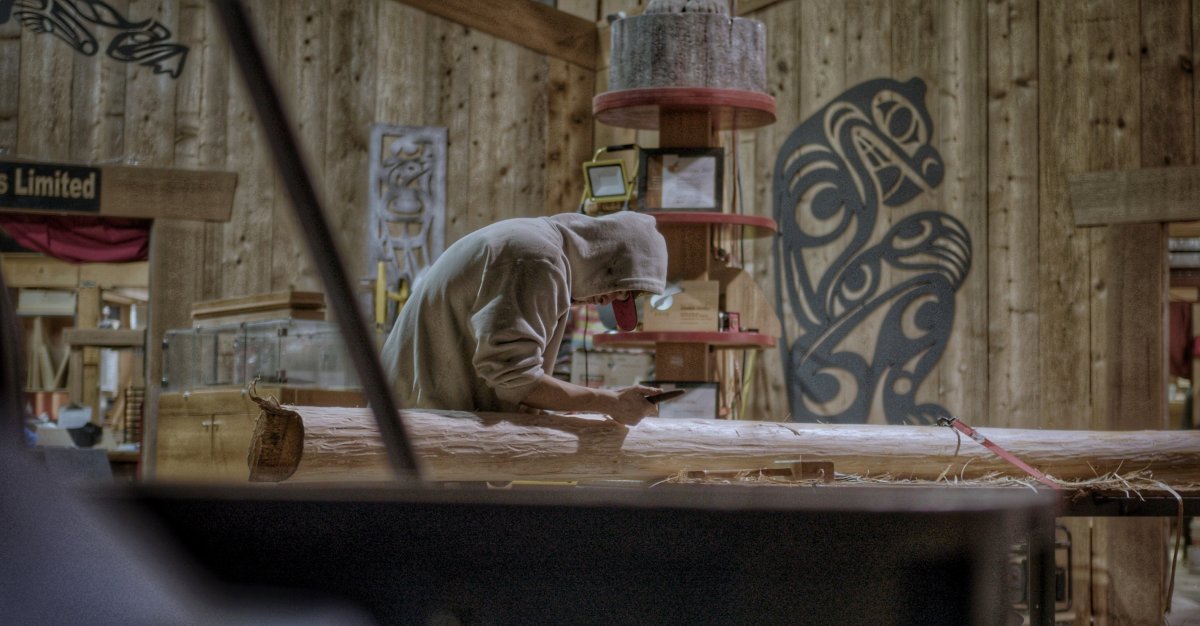Bringing artifacts back home is a priority for Tsleil-Waututh Nation.

“There has always been a mandate from our elders to bring back as much as we can,” said Mike George, cultural and technical advisor with the nation. “Artifacts and human remains are part of that, water to a healthy state both salt and fresh, land in any form we can get it — whether it be a shared opportunity, a lease or transfer of title as — and language.”
Tsleil-Waututh Nation has spent years working with Simon Fraser University to bring artifacts home. Recently, they were able to complete the transfer, but instead of housing them in a basement the nation built a custom repository.
“The thought of bringing artifacts back was why not create a home for them so that we weren’t just going to bring them back and put them in a box,” Mike said. “We wanted to create the symbol of a house that they could be stored in. So, around the very fancy file cabinet we created a slew̓ənew̓txʷ, which loosely means shelter in hən̓q̓əmin̓əm.”
The slew̓ənew̓txʷ will be home to over 700 Tsleil-Waututh artifacts returning to the community from museums and universities. The wood surround and shingles were harvested on the territory by community members involved in the project.
In recent years, there’s been a push for universities and museums to return artifacts to Indigenous communities. On Sept. 30, 2023, a totem pole was returned to the Nisga’a Nation from a Scottish Museum. Earlier last year, Pope Francis hinted that the Vatican would be willing to return artifacts to Indigenous communities when possible.
But the process isn’t as easy as an institution and First Nation settling on a date and time for the exchange. Evan Hardy, repatriation and collections specialist with Tsleil-Waututh Nation, said their process took a couple of years.
The artifacts returned from SFU were part of a field school the university held 20 years ago in collaboration with Tsleil-Waututh, so it was easy to determine the items belonged to the nation.
“There was a couple of years of just sorting out logistics. We needed a place to put them when they came back that would also store other artifacts in the future,” Hardy said. “We also needed approval from the province to be recognized as an archeological repository.”
- Indigenous groups in B.C. renew calls for justice for MMIWG on annual Red Dress Day
- Whitecaps play to scoreless draw in 50th anniversary match against Austin FC
- Car crashes into flower store at Park and Tilford in North Vancouver
- B.C. man losing vision needs to find home for treasured book collection
Establishing a repository was important for the nation so that when archeological work happens in the future, artifacts don’t have to go into repositories at museums or universities. They get to stay home.
“There are quite a few other nations that are interested in also becoming repositories, so we’re working with some of them and some existing repositories to push for legislative change.”
In addition to establishing a repository, the nation also undertook cultural work to figure out the best way to bring these artifacts home.
“We needed to understand the process and processes that were going to take place so that we can do it in a good way,” Mike said. “We needed to understand what our culture needed.”
The artifacts are treated with a lot of respect, said Gabriel George, director of the treaty, lands and resources department with Tsleil-Waututh.
“We wanted to make sure that we followed our protocols and respected our ancestors,” he said. “So we worked with spiritual advisors, Chad Paul from the Sts’ailes Nation and Mike, who guided us.
“We had a ceremony that was more private before we started the work of actually bringing them home and we brought some of our family and leadership when we went to SFU so that they weren’t journeying here on their own.”
Now that the artifacts are back home, the nation hopes to keep them safe.
“I remember talking with a couple of elders, asking them what we should do when they’re back,” Mike said. “One elder said, we should put them to rest… so our plan is to not expose them too much but also have it so people can learn.”
The community is actively working with seven local repositories to have artifacts retuned, but imagine that number will grow.
“This is the beginning,” Mike said, “and it’s hard to see the end, its just going to keep on getting bigger.”






Comments